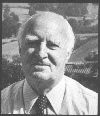<< Return to Evidence Index
Past life memories through
dreams
A number
of people have had dreams or nightmares about past lives
which produced evidence which could later be verified.
 An
English case that convinced many experts including psychiatrist
Dr Arthur Guirdham, was that of Mrs. Smith, a perfectly
sane ordinary English housewife who for years had been suffering
from terrible nightmares of being burned at the stake. An
English case that convinced many experts including psychiatrist
Dr Arthur Guirdham, was that of Mrs. Smith, a perfectly
sane ordinary English housewife who for years had been suffering
from terrible nightmares of being burned at the stake.
In 1962 Mrs Smith went to Dr Guirdham in a hospital's outpatient
department, where Dr Guirdham worked as a psychiatrist.
She was seeking treatment for a recurring nightmare which
she experienced occasionally since her teens, but was now
coming two or three times a week. In her dream she was lying
on her back on the floor while a man approached her from
behind. She did not know what was going to happen but was
absolutely terrified.
Although Dr Guirdham remained calm and professional,
he had to hide his surprise while listening to his new patient
because he had been having the same nightmare for more than
30 years. The doctor did not tell the patient about this.
Strangely after this meeting neither the doctor nor the
patient had the nightmare again.
Their meetings continued, though. Dr Guirdham
was certain there was nothing mentally wrong with his patient
but he wanted to know more about her knowledge of the past.
She gave him a list of names of people she said had lived
in the 13th century and described things that happened to
them. She also told Dr Guirdham that he, too, had been alive
then and was called Rogiet de Cruisot.
As a psychiatrist, Dr Guirdham knew about
claims of reincarnation but never had much interest in the
subject. However he decided to investigate the information
Mrs Smioth gave him.
He found that the names given to him by his patient were
indeed accurate, though only mentioned in fairly rare history
records of the Middle Ages. Those records had been written
in French and had never been translated into English. The
people Dr Guirdham's patient described were all members
of the Cathar sect, a group that had flourished in southern
France and northern Italy in the Middle Ages. Among other
things, the Cathars believed in reincarnation.
Over time, Dr Guirdham met more and more individuals, 11
in total, who had memories of their past lives living together
in a Cathar group.
None of the subjects were drugged or hypnotized;
past names and incidents simply appeared in their minds,
said Dr Guirdham.
Mrs Smith also gave Dr Guirdham copies of
drawings and verses of songs she had written as a schoolgirl.
Experts in Medieval French confirmed that she was writing
in langue doc, the language of Southern France in the twelfth
and thirteenth centuries.
She went on to astonish experts with her
knowledge of the Cathars in Touluse who had been persecuted
by the forces of the Inquisition. She reproduced word for
word in 1944 songs which were only discovered in archives
in 1967; she knew historical details which only came to
light later upon the most painstaking investigation such
as:
• correct drawings of old French coins,
jewelry and the layout of buildings
• correct details of the family and social relationships
of people who do not appear in text-books but who were ultimately
traced though the records of the Inquisition
• that the crypt of a certain church was used to hold
religious prisoners
• details of rituals and religious
dress.
So impressed was Professor Nellie, the greatest
living authority on the period, that he advised Guirdham
that in future when there was conflict between the accepted
historical view and the memories of his patient, he should
'go by the patient.'
Guirdham later went on to discover several
other people close to him who all shared the same memories
that he documented in his book
The Cathars and Reincarnation.
He went from being a total skeptic nicknamed 'doubting Thomas'
to putting his considerable professional reputation on the
line to lecture his colleagues in the British medical profession
about 'Reincarnation and the Practice of Medicine' (Guirdham
1969).
<<
Return to Evidence Index
|